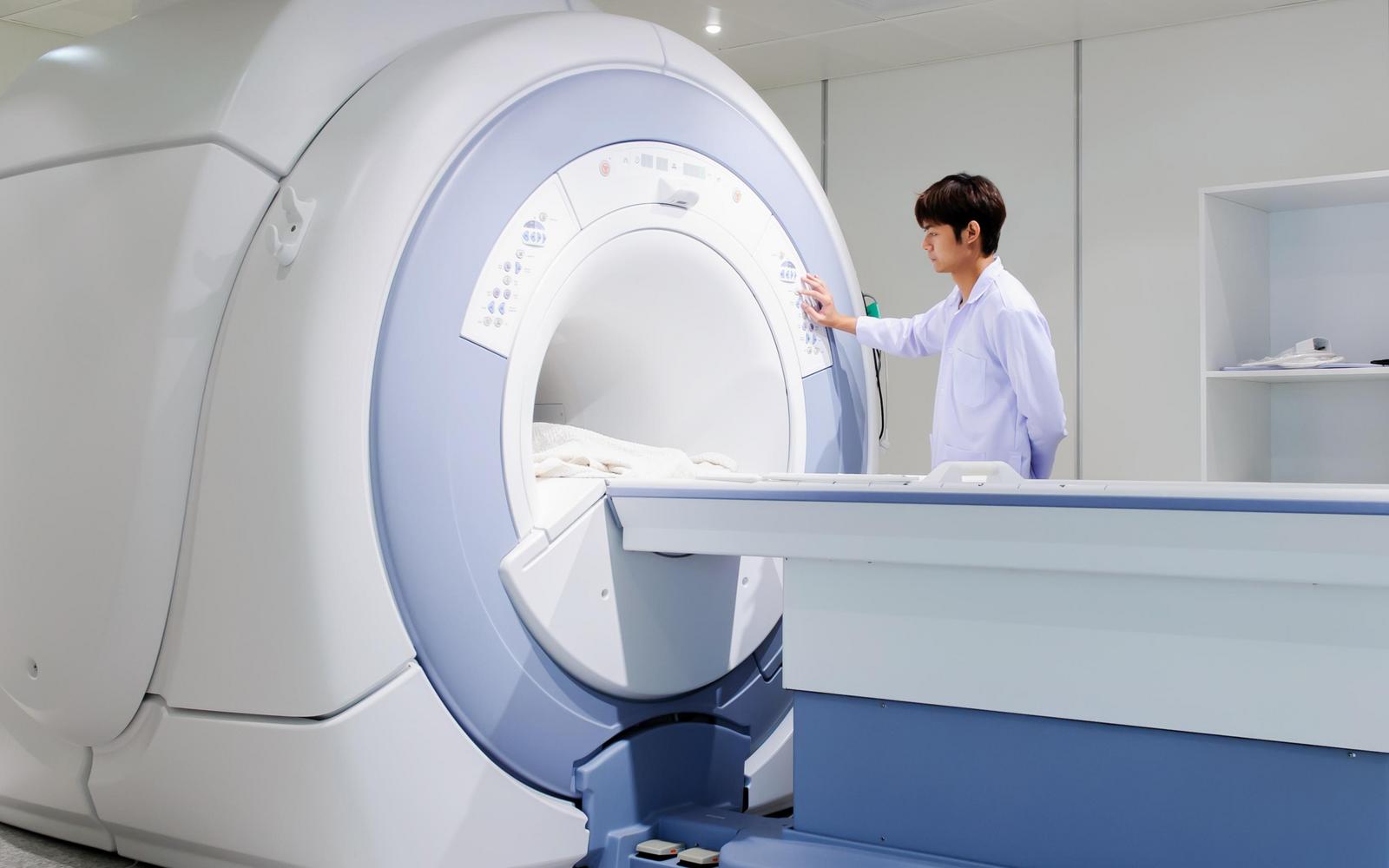
MED-EL
Published Feb 18, 2015
The History of MRI and Cochlear Implants
Magnetic Resonance Imaging (MRI) is one of the most important tools that a doctor can use to look inside the human body without surgery. If you have a cochlear implant, you might know that each cochlear implant can only be used at the specific MRI strengths which are approved by regulatory agencies like the FDA*. Read all about the history of MRI and cochlear implants here.

If you’re considering a cochlear implant, keeping up to date with the latest MRI and cochlear implant technology means that you’ll be well-informed about the best cochlear implant for you.
The History of MRI
The first successful image made with magnetic resonance was taken in 1977.Geva, T. (2006). Magnetic Resonance Imaging: Historical Perspective. J Cardiovasc Mang, 8, 573–580. doi:10.1080/10976640600755302[1] Early experimental MRI machines ran with much lower strengths than those used today, like a prototype from Siemens in 1978 that had a 0.1 Tesla magnet.(2014, November). Magnetic Resonance Imaging at Siemens: A success story [Brochure]. Germany: n.p.[2]
But that’s not to say that even the lowest-strength MRI machine uses a weak magnet. For comparison, the Earth’s magnetic field is 0.00005 Tesla.
0.2 Tesla
Although 0.2 Tesla MRI was introduced in the 1980s, it took many years for the FDA to approve cochlear implants for use with it. The MED-EL COMBI 40+, introduced in 1996, was the first cochlear implant to be FDA-approved for 0.2 Tesla MRI without magnet removal; this approval came in 2003.MED-EL. (2003, June 18). The MED-EL Cochlear Implant System is FDA approved for use with Magnetic Resonance Imaging (MRI) [Press release]. Retrieved from http://www.prnewswire.com/news-releases/fda-approves-an-industry-first—-the-med-el-cochlear-implant-system-is-fda-approved-for-use-with-magnetic-resonance-imaging-mri-71351697.html[3]
Practically all currently manufactured cochlear implants are approved for use at 0.2 Tesla with the magnet in place.
1.5 Tesla
1.0–1.5 Tesla MRI came around in the 1980s. This increase in power brought with it an increase in resolution, but it was also incompatible with many cochlear implants. That’s because the machine’s magnet could pull on the cochlear implant’s magnet and move it around under the skin.
One way that some cochlear implants got around this was by having a removable magnet: the surgeon would have to cut through the skin to the implant to remove the magnet before the MRI procedure and replace it afterwards. In the meantime the whole cochlear implant would be unusable because the coil couldn’t stay affixed to it.
The MED-EL cochlear implants PULSAR, SONATA, and MED-EL CONCERTO were the first cochlear implants to be approved for 1.5 Tesla MRI without this surgical removal of the magnet.MED-EL. (2013, June 14). MED-EL Announces FDA Approval of PULSAR, SONATA and MED-EL CONCERT Cochlear Implants for 1.5T MRI [Press release]. Retrieved from http://s3.medel.com/pdf/US/Final_MRI_FDA_Approval_Press_Release_06_14_13.pdf[4] Other implants, like the Advanced Bionics HiRes 90K and the Cochlear Nucleus 24 are currently approved for 1.5 T MRI only if the magnet is surgically removed. MRI Guidelines. (2015). Retrieved February 18, 2015, from http://www.cochlear.com/wps/wcm/connect/us/for-professionals/cochlear-implants/warnings-and-precautions/mri-guidelines[5]HiRes 90K Implant Family. (2015). Retrieved February 18, 2015, from http://www.advancedbionics.com/com/en/products/hires_90k_implant.html[6]Azadarmaki, R., Tubbs, R., Chen, D.A., Shellock, F.G. (2014). MRI information for commonly used otologic implants: review and update. JAMA Otolaryngol Head Neck Surg, 150, 512–9. doi:10.1177/0194599813518306[7]
3.0 Tesla
3.0 Tesla MRI is twice as strong as 1.5 T MRI. 3.0 T MRI machines were introduced in hospitals around 2003 and are some of the strongest, and therefore highest-resolution, machines currently used in non-experimental settings.
However, many cochlear implants are not compatible with 3.0 T MRI. Like the previous jump from 0.2 T to 1.5 T MRI, this new increase in power places increased demands on the cochlear implant’s magnet.
MED-EL’s SYNCHRONY cochlear implant was the first to be approved for 3.0 T MRI without magnet removal.
The Future of Cochlear Implant MRI Compatibility
What is it about our SYNCHRONY series implants that makes them suitable for 3.0 Tesla MRI without surgical removal of the magnet?
It’s all in the magnet.

All magnets have north and south poles, so an MRI machine’s magnet will interact differently with the cochlear implant’s magnet depending on which pole is closest. Previous cochlear implant designs, MED-EL’s included, used a magnet which was fixed in place. When the machine is activated, a fixed magnet is pulled on because it isn’t aligned with the machine’s magnet.
The SYNCHRONY 2’s magnet does away with this problem. Instead of being fixed permanently in one position, it “floats” in a titanium housing and is able to freely rotate. This allows it to self-align with the machine’s magnet. Is the machine’s magnet to the left? SYNCHRONY 2’s magnet rotates to it. Is the machine’s magnet to the right? SYNCHRONY 2’s magnet can rotate that way too.
That means that it’s possible to have a strong 3.0 Tesla MRI even without removing the magnet.
Are you considering a cochlear implant and want to learn more?
Check out all the benefits of our SYNCHRONY 2 cochlear implant on our website.
Find out all about MRI and cochlear implants here.
*For the purposes of consistency, “approval” as used in this blog post refers to the label “MR Conditional” as used by the Food and Drug Administration (FDA), the regulatory agency responsible for MRI approvals of cochlear implants in the USA. Approvals are accurate as of the date of publication of this blog article. Approval in your specific country or area may be different to the FDA approval.
References
-
[1]
Geva, T. (2006). Magnetic Resonance Imaging: Historical Perspective. J Cardiovasc Mang, 8, 573–580. doi:10.1080/10976640600755302
-
[2]
(2014, November). Magnetic Resonance Imaging at Siemens: A success story [Brochure]. Germany: n.p.
-
[3]
MED-EL. (2003, June 18). The MED-EL Cochlear Implant System is FDA approved for use with Magnetic Resonance Imaging (MRI) [Press release]. Retrieved from http://www.prnewswire.com/news-releases/fda-approves-an-industry-first—-the-med-el-cochlear-implant-system-is-fda-approved-for-use-with-magnetic-resonance-imaging-mri-71351697.html
-
[4]
MED-EL. (2013, June 14). MED-EL Announces FDA Approval of PULSAR, SONATA and MED-EL CONCERT Cochlear Implants for 1.5T MRI [Press release]. Retrieved from http://s3.medel.com/pdf/US/Final_MRI_FDA_Approval_Press_Release_06_14_13.pdf
-
[5]
MRI Guidelines. (2015). Retrieved February 18, 2015, from http://www.cochlear.com/wps/wcm/connect/us/for-professionals/cochlear-implants/warnings-and-precautions/mri-guidelines
-
[6]
HiRes 90K Implant Family. (2015). Retrieved February 18, 2015, from http://www.advancedbionics.com/com/en/products/hires_90k_implant.html
-
[7]
Azadarmaki, R., Tubbs, R., Chen, D.A., Shellock, F.G. (2014). MRI information for commonly used otologic implants: review and update. JAMA Otolaryngol Head Neck Surg, 150, 512–9. doi:10.1177/0194599813518306
References

MED-EL
Was this article helpful?
Thanks for your feedback.
Sign up for newsletter below for more.
Thanks for your feedback.
Please leave your message below.
Thanks for your message. We will reply as soon as possible.
Send us a message
Field is required
John Doe
Field is required
name@mail.com
Field is required
What do you think?
© MED-EL Medical Electronics. All rights reserved. The content on this website is for general informational purposes only and should not be taken as medical advice. Contact your doctor or hearing specialist to learn what type of hearing solution suits your specific needs. Not all products, features, or indications are approved in all countries.

MED-EL

MED-EL


